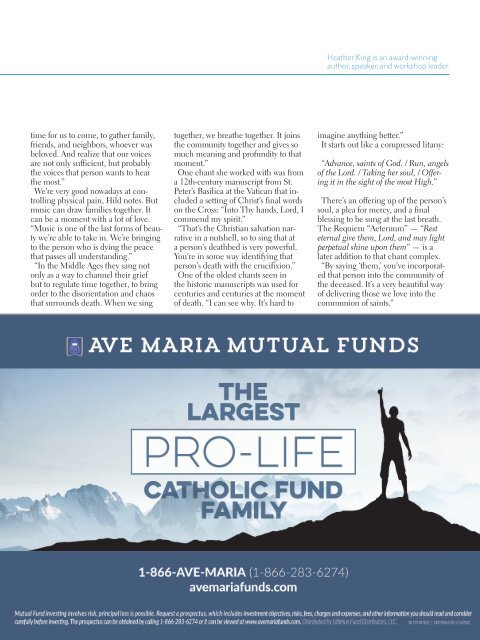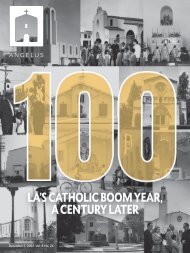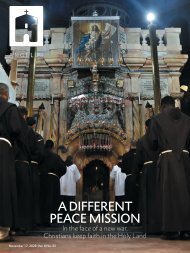Angelus News | September 23, 2022 | Vol. 7 No. 19
On the cover: The logo used for the Catechism of the Catholic Church, published in 1992, is adapted from an image found in the Catacombs of Domitilla in Rome thought to symbolize “the rest and the happiness that the soul of the departed finds in eternal life.” Ahead of the 30th anniversary of the catechism’s release next month, Russell Shaw explains on Page 10 what prompted the Church to undertake such an immense project. On Page 26, Greg Erlandson offers a perspective on the text’s relevance to ordinary Catholics — like his own mother.
On the cover: The logo used for the Catechism of the Catholic Church, published in 1992, is adapted from an image found in the Catacombs of Domitilla in Rome thought to symbolize “the rest and the happiness that the soul of the departed finds in eternal life.” Ahead of the 30th anniversary of the catechism’s release next month, Russell Shaw explains on Page 10 what prompted the Church to undertake such an immense project. On Page 26, Greg Erlandson offers a perspective on the text’s relevance to ordinary Catholics — like his own mother.
You also want an ePaper? Increase the reach of your titles
YUMPU automatically turns print PDFs into web optimized ePapers that Google loves.
Heather King is an award-winning<br />
author, speaker, and workshop leader.<br />
time for us to come, to gather family,<br />
friends, and neighbors, whoever was<br />
beloved. And realize that our voices<br />
are not only sufficient, but probably<br />
the voices that person wants to hear<br />
the most.”<br />
We’re very good nowadays at controlling<br />
physical pain, Hild notes. But<br />
music can draw families together. It<br />
can be a moment with a lot of love.<br />
“Music is one of the last forms of beauty<br />
we’re able to take in. We’re bringing<br />
to the person who is dying the peace<br />
that passes all understanding.”<br />
“In the Middle Ages they sang not<br />
only as a way to channel their grief<br />
but to regulate time together, to bring<br />
order to the disorientation and chaos<br />
that surrounds death. When we sing<br />
together, we breathe together. It joins<br />
the community together and gives so<br />
much meaning and profundity to that<br />
moment.”<br />
One chant she worked with was from<br />
a 12th-century manuscript from St.<br />
Peter’s Basilica at the Vatican that included<br />
a setting of Christ’s final words<br />
on the Cross: “Into Thy hands, Lord, I<br />
commend my spirit.”<br />
“That’s the Christian salvation narrative<br />
in a nutshell, so to sing that at<br />
a person’s deathbed is very powerful.<br />
You’re in some way identifying that<br />
person’s death with the crucifixion.”<br />
One of the oldest chants seen in<br />
the historic manuscripts was used for<br />
centuries and centuries at the moment<br />
of death. “I can see why. It’s hard to<br />
imagine anything better.”<br />
It starts out like a compressed litany:<br />
“Advance, saints of God. / Run, angels<br />
of the Lord. / Taking her soul, / Offering<br />
it in the sight of the most High.”<br />
There’s an offering up of the person’s<br />
soul, a plea for mercy, and a final<br />
blessing to be sung at the last breath.<br />
The Requiem “Aeternum” — “Rest<br />
eternal give them, Lord, and may light<br />
perpetual shine upon them” — is a<br />
later addition to that chant complex.<br />
“By saying ‘them,’ you’ve incorporated<br />
that person into the community of<br />
the deceased. It’s a very beautiful way<br />
of delivering those we love into the<br />
communion of saints.”


















